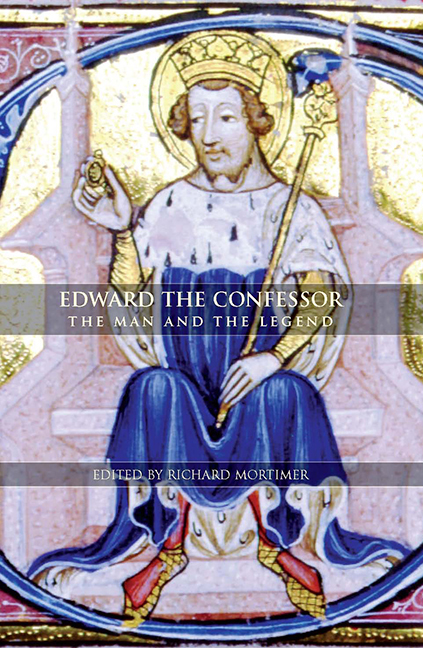Book contents
- Frontmatter
- Contents
- List of illustrations
- List of maps
- Preface
- Abbreviations
- Genealogical table
- 1 Edward the Confessor: the Man and the Legend
- 2 Edward the Ætheling (c. 1005–16)
- 3 Edward and Normandy
- 4 Edward the Confessor and the Succession Question
- 5 Edith, Edward's Wife and Queen
- 6 Edward the Confessor's Westminster Abbey
- 7 New Glimpses of Edward the Confessor's Abbey at Westminster
- 8 Craftsmen and Administrators in the Building of the Confessor's Abbey
- 9 The Sanctity and Canonisation of Edward the Confessor
- Bibliography
- Index
6 - Edward the Confessor's Westminster Abbey
Published online by Cambridge University Press: 25 October 2017
- Frontmatter
- Contents
- List of illustrations
- List of maps
- Preface
- Abbreviations
- Genealogical table
- 1 Edward the Confessor: the Man and the Legend
- 2 Edward the Ætheling (c. 1005–16)
- 3 Edward and Normandy
- 4 Edward the Confessor and the Succession Question
- 5 Edith, Edward's Wife and Queen
- 6 Edward the Confessor's Westminster Abbey
- 7 New Glimpses of Edward the Confessor's Abbey at Westminster
- 8 Craftsmen and Administrators in the Building of the Confessor's Abbey
- 9 The Sanctity and Canonisation of Edward the Confessor
- Bibliography
- Index
Summary
THE CHURCH begun by Edward the Confessor at Westminster Abbey between 1042 and 1052 has a good claim to being the most important building project of his reign. Politically it was a clear statement of his links with Normandy and intentions at home, and architecturally it indicates both the importance of Normandy and the extent to which a structure in England could differ from its sources in the duchy.
According to the contemporary Vita Edwardi, Edward the Confessor began the rebuilding of St Peter's abbey at Westminster principally in order to provide himself with a royal burial church. It is not known how soon after he came to the throne in 1042 it was begun, but according to the Anglo-Saxon Chronicle the church was consecrated on 28 December 1065 and Edward was buried there when he died a week later in January 1066. Although Edward's church was altered in the twelfth and thirteenth centuries and finally demolished in 1245 to make way for Henry III's new building, it can be reconstructed in broad outline from comments in the Vita, Sulcard's account of the 1080s, the Bayeux Tapestry of 1082 or earlier, and the excavated remains. In 1866 Gilbert Scott uncovered bases in the east arm; in 1910 Lethaby and Armitage Robinson uncovered an adjacent fragment of the main apse; in 1930 Tanner and Clapham excavated the bases in the south-western parts of the nave; and in 2003 Blockley reinvestigated the discoveries in the east arm. Clapham's text sets out the history of the building, but the comprehensive study is Gem's account published in the Battle transactions in 1981.
Four bases and a curved foundation wall indicate that the east arm had two bays ending in an apse, with attached shafts articulating the bays and marking the chord (fig. 6.1). The transepts and crossing are lost, but their position and width can be deduced from the east range of the cloister, which survives in the undercroft of the dormitory.
- Type
- Chapter
- Information
- Edward the ConfessorThe Man and the Legend, pp. 139 - 150Publisher: Boydell & BrewerPrint publication year: 2009

